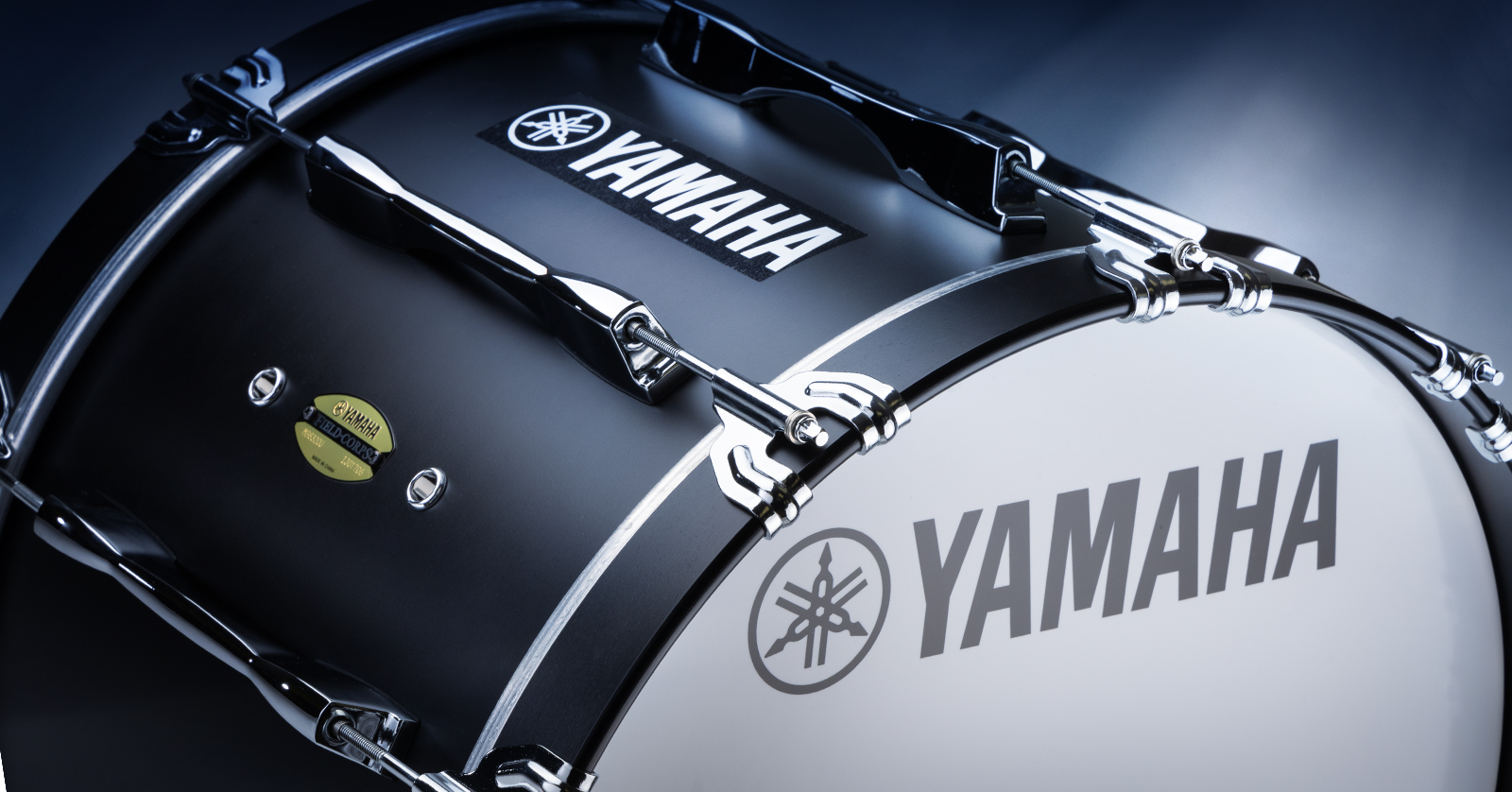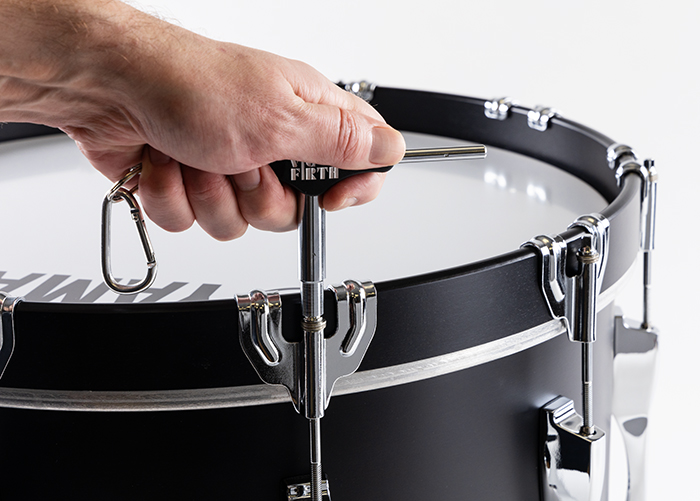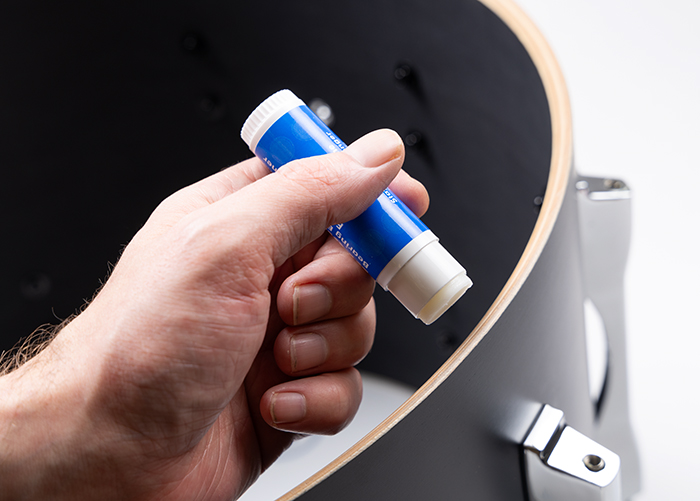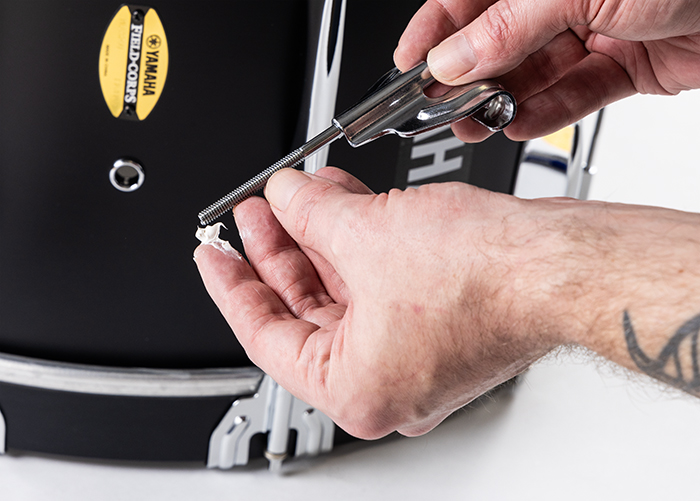How to Tune Marching Bass Drums for a Drumline

Tuning marching bass drums can be an art form. They’re the heartbeat of the drumline, and you want to make sure they all pop, so in this guide, we will show you how to tune your marching bass drums. Follow the sections below to get started.
- What Pitch Should I Tune My Marching Bass Drums?
- How to Tune Marching Bass Drums
- Marching Bass Drum Tuning Tips and Tricks
What Pitch Should I Tune My Marching Bass Drums?
The most asked question among marching bass drum players is to what pitch they should tune their drums. Should you tune to whatever sounds good? Do I need to tune to a specific pitch? What is the standard tuning for the bass drum?
Unlike other pitched instruments (like guitars), there isn’t a standard tuning for marching bass drums. That said, they’re tuned in intervals. This ensures your line has a cohesive, musical sound, not just shoes in a dryer.
Generally speaking, you should tune the bottom three bass drums to a perfect fifth (power chord). This provides extra punch, especially when the bass line is playing in unison. The top two are purely subjective, however. Some will tune to a minor third, while others may tune to a major third or a perfect fifth.
The most common tuning (going from low to high) is D-A-D-F#-A. This is just a baseline (pun intended), so feel free to experiment with the intervals! Also, although marching bass drums are considered melodic instruments, their resonance won’t cut through horn lines, so there’s no need to tune the bass drums to a song’s specific key.

Tuning a bass drum
How to Tune Marching Bass Drums
TIP: When tuning marching bass drums, start with the lowest bass drum.
Tuning marching bass drums for a drumline is slightly different from tuning drums on a kit. Not only do you need to think of the pitch of just one drum, but you also need to focus on the pitch of the other drums in the line. It will also take a little more time, as marching bass drumheads will be under more tension.
- Wipe the bearing edge and the inside of the bass drum to clean up any debris. This is also an excellent time to clean hardware and hoops.
- Always make sure any logos on the bass drums are uniform!
- Finger-tighten the tension rods and slowly raise the drum’s pitch using the cross-lug pattern.
- Before bringing the bass drum up to pitch, place your finger on the center of the drum. Tap the head next to each lug and the lug next to it so they match in pitch. This ensures the lugs are in tune with each other.
- After the bass drum lugs are in tune with each other, tune the drum up to pitch using one key turn at a time.
- Use a piano app, a tuner, or another form of pitch detection to assist during the tuning process.
- Once all bass drums are tuned to pitch, play them consecutively and adjust the drum tuning as needed.
Take Your Time!
As we said, tuning marching bass drums is an art form. Not only do you have to tune the drum to a specific pitch, but you also need to make sure the pitches on both heads match, making things difficult. Lightly placing your hand on one head while tuning the other can make things easier, but take your time! This will set you up for success in the long run.
Marching Bass Drum Tuning Tips and Tricks
Now that you know how to tune marching bass drums, here are a few tips and tricks to set you up for success.
- Apply a small dab of white lithium grease, 3-and-1 oil, or sewing machine oil at the tip of the tension rod for smoother tuning.
- If you are tuning your marching bass drums and don’t own a bass drum stand, lay your bass drum down on a soft surface like a carpet or a blanket. This ensures the opposite side hoop and lugs don’t get scratched. If you’re tuning outdoors, grass is fine, but put a blanket underneath so your drum doesn’t get dirty.
- Use a high-tension drum key when tuning bass drums; the leverage it provides makes tuning less exhausting. It will also be less prone to breaking than a standard drum key.
- Check the tuning daily and check it before all your performances. This is especially true if you install new heads.
- If you have unwanted- or too much resonance after tuning, consider using bass drum muffling strips or weather-stripping foam on the outside of the bass drumhead.
- Be sure to install new bass drumheads at least two days before the next performance. This allows the head enough time to stretch and stay in tune.

Applying bearing edge conditioner to the marching bass drum bearing edge.

Apply white lithium grease to tension rods.
When you need help, Sweetwater has the answers!
Our knowledge base contains over 28,000 expertly written tech articles that will give you answers and help you get the most out of your gear. Our pro musicians and gear experts update content daily to keep you informed and on your way. Best of all, it’s totally FREE, and it’s just another reason that you get more at Sweetwater.com.


